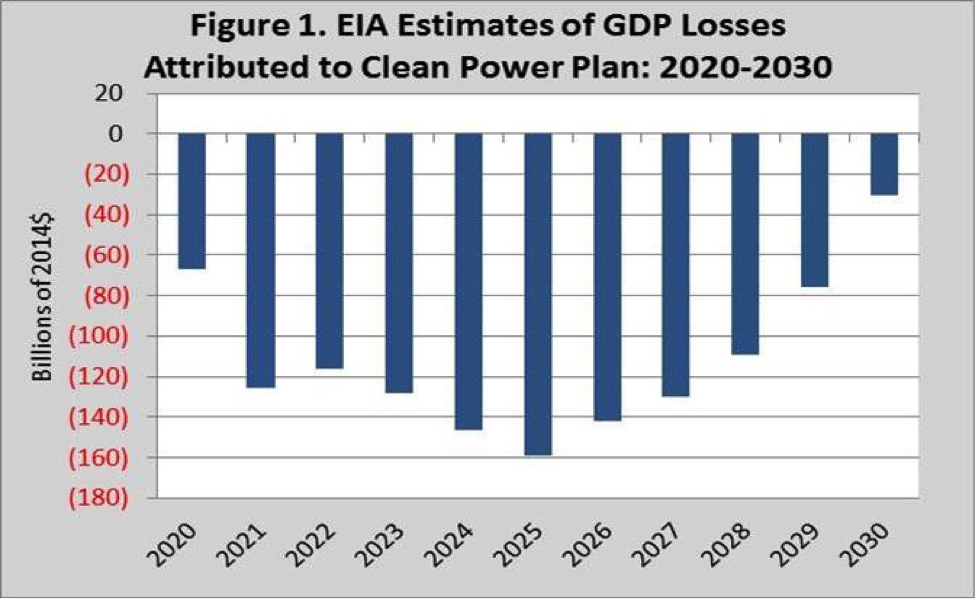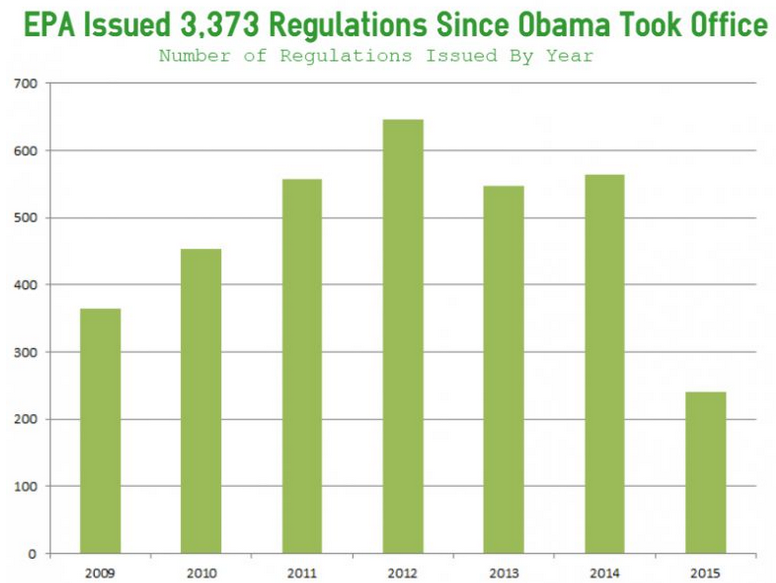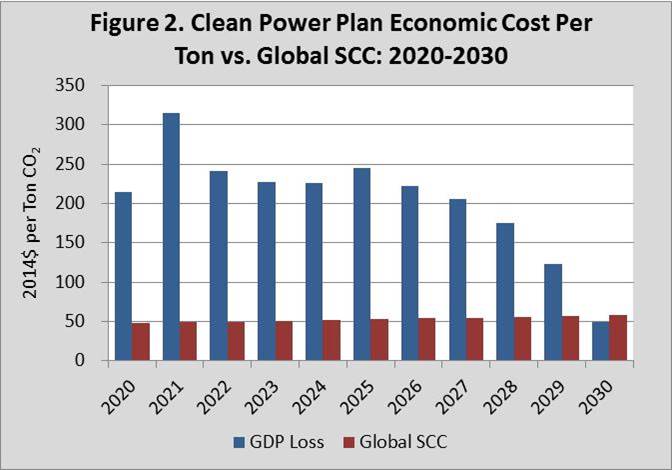The Supreme Court ruled on June 29, 2015, that the Environmental Protection Agency (EPA) must consider costs before determining to regulate mercury and other toxic emissions from fossil fuel-fired power plants.[i] EPA contended that, under the Clean Air Act, it only need to consider public health when making the initial decision to regulate those emissions. Unfortunately, due to EPA’s tight schedule for compliance, a majority of the coal-fired units affected by the Mercury and Air Toxics Standards have already been either retrofitted with the appropriate control technologies, switched fuels or shut down, making this Supreme Court decision have little effect on containing costs for electric consumers. But, the decision can serve as an example for future regulations.
This Supreme Court decision reversed an earlier decision by the Court of Appeals for the D.C. Circuit. It does not immediately invalidate the standards, but remands the case back to the lower court for a decision on what to do next. Justice Antonin Scalia wrote that EPA acted unreasonably when it moved to draft its Mercury and Air Toxic Standards without first considering the costs of the regulations. EPA later determined the cost would be $9.6 billion per year, even though its direct benefits from mercury reduction totaled only $4 to $6 million per year—1600 to 2400 times higher.
While the decision does not change the outcome that compliance has either been reached or will be reached by most electric utilities in 2016, it sets a precedent for other EPA rulings, which are in progress. EPA is set to finalize 3 electric utility regulations this summer—the regulation of carbon dioxide from new power plants, from modified power plants, and from existing power plants. The regulation on new power plants makes it extremely difficult to build new coal-fired power plants because of the limit EPA set for the amount of carbon dioxide they can emit. The regulation on existing power plants requires the reduction of their carbon dioxide emissions by 30 percent from 2005 levels by 2030, which is expected to retire a significant number of coal-fired power plants. The Energy Information Administration expects that 90 gigawatts of coal-fired plants will be retired to meet EPA regulations—most of which will retire by 2020.[ii] Other agencies expect the amount to be greater.[iii]
There have already been challenges to these regulations, but the lower courts refuse to judicate on them because while proposed, they have not been finalized. Unfortunately, EPA has made the deadlines so tight, that waiting for finalization and for the courts to act would mean that companies would be out of compliance if they do not take action soon. The problem is that these regulations are very costly for the American public, increasing electricity prices for consumers, with double digit percentage increases in several areas of the country. In EIA’s analysis of the rule for existing power plants, residential electricity prices nationwide are 16 percent higher in real terms by 2030 than they are today.
EPA Regulations under the Obama Administration
Since President Obama took office on January 20, 2009, EPA issued 3,373 new final regulations, including regulations on greenhouse gases, air quality, emissions and hazardous substances. The 3,373 regulations total 29,770 pages in the Federal Register and approximately 29,770,000 words–23 times as many pages as the Bible and 46 times as many words.[iv]
In President Obama’s first year in office, the EPA issued 365 regulations, averaging one rule per day. In 2010, the EPA issued 454 regulations and in 2011, the EPA issued 557 regulations. The number of rules issued peaked in 2012 with 646 final rules issued–77 percent more than issued in Obama’s first year. But, EPA keeps issuing more regulations. In 2013, the EPA issued 548 regulations and in 2014, the EPA issued 564 regulations. As of early June 2015, the EPA issued 241 regulations. Thus, during the Obama Presidency, the EPA issued an average of 2 regulations per work day and 1.45 regulations per calendar day.
EPA’s Rule on Existing Power Plants
Despite the flexibility that EPA touts for its so-called “Clean Power Plan”, reducing carbon dioxide emissions by 30 percent from 2005 levels by 2030, would come at a tremendous economic cost. When compared against EIA’s Reference Case, cumulative economic costs over the Plan’s 2020 to 2030 compliance period are an estimated $1.23 trillion in lost GDP (2014 dollars). The peak annual loss of $159 billion occurs in 2025; the average annual GDP loss over the compliance period is $112 billion. (See Figure 1 below.)[v]
Looking at the cost of reducing each ton of carbon dioxide using EIA estimates, it will cost an average of $199 in lost economic growth for each ton of carbon dioxide reduced between 2020 and 2030. In 2021, it is expected to reach $316 per ton—or 6.6 times the social cost of carbon ($48 per ton). The social cost of carbon is an attempt to measure the health, property, agricultural, ecosystem, and other supposed impacts of emitting a ton of carbon dioxide. Over the compliance period, the average per-ton economic loss is 3.7 times bigger than the social cost of carbon benefit. Figure 2 below shows the economic cost per ton of carbon dioxide calculated for each year through 2030 from EIA’s analysis (blue bars) and the Obama Administration’s global social cost of carbon estimate for that year (red bars).

Source: http://www.energyxxi.org/eia-analysis-shows-epas-carbon-regulations-all-economic-pain-no-climate-gain
The high costs, however, do little for the environment. Using EPA’s own models, the Cato Institute has shown that the “Clean Power Plan’s” expected reduction in carbon dioxide emissions would reduce global temperatures by a negligible 0.018 degrees Celsius by 2100.[vi] Further, by 2030, all of the projected emission reductions from implementing the “Clean Power Plan” will be offset by Chinese emissions in just 13½ days, making this regulation a truly expensive one for the American public.[vii]
Conclusion
Clearly, from the Supreme Court’s decision regarding the Mercury and Air Toxic Standards, legal challenges need to be settled before regulations take effect. The lower court’s refusal to deal with the legal challenges to EPA’s regulation of carbon dioxide from power plants will cost industry billions to comply with the rule, increase unemployment in the electric generation and coal industries, and increase electricity rates for the American consumer. The “Clean Power Plan” is a major regulation with huge ramifications on the cost and reliability of the electric generating system. EPA needs to consider these issues in a thorough manner before it finalizes its carbon rules this summer.
[i] Greenwire, Supreme Court upends EPA rules for mercury emissions, June 29, 2015, http://www.eenews.net/greenwire/stories/1060021016
[ii] Institute for Energy Research, https://www.instituteforenergyresearch.org/analysis/how-to-kill-the-coal-industry-implement-epas-clean-power-plan/
[iii] Institute for Energy Research, https://www.instituteforenergyresearch.org/greatest-threat-power-grid-govt/
[iv] CNSNEWS, Obama’s EPA regulations, June 8, 2015, http://www.cnsnews.com/news/article/ali-meyer/obamas-epa-regulations-6552x-long-constitution-46x-long-bible
[v] Institute for 21st Century Energy, EIA Analysis Shows EPA’s Carbon Regulations All Economic Pain for No Climate Gain, http://www.energyxxi.org/eia-analysis-shows-epas-carbon-regulations-all-economic-pain-no-climate-gain
[vi] CATO, 0.02°C Temperature Rise Averted: The Vital Number Missing from the EPA’s “By the Numbers” Fact Sheet, June 11, 2014,http://www.cato.org/blog/002degc-temperature-rise-averted-vital-number-missing-epas-numbers-fact-sheet
[vii] Waco Tribune, EPA’s Clean Power Plan Act is all pain, no gain for the Texas economy, energy production, May 14, 2015, http://www.wacotrib.com/opinion/columns/guest_columns/mike-nasi-guest-columnist-epa-s-clean-power-act-is/article_7cab2225-bc0f-5425-843b-f86a8b744c1d.html





